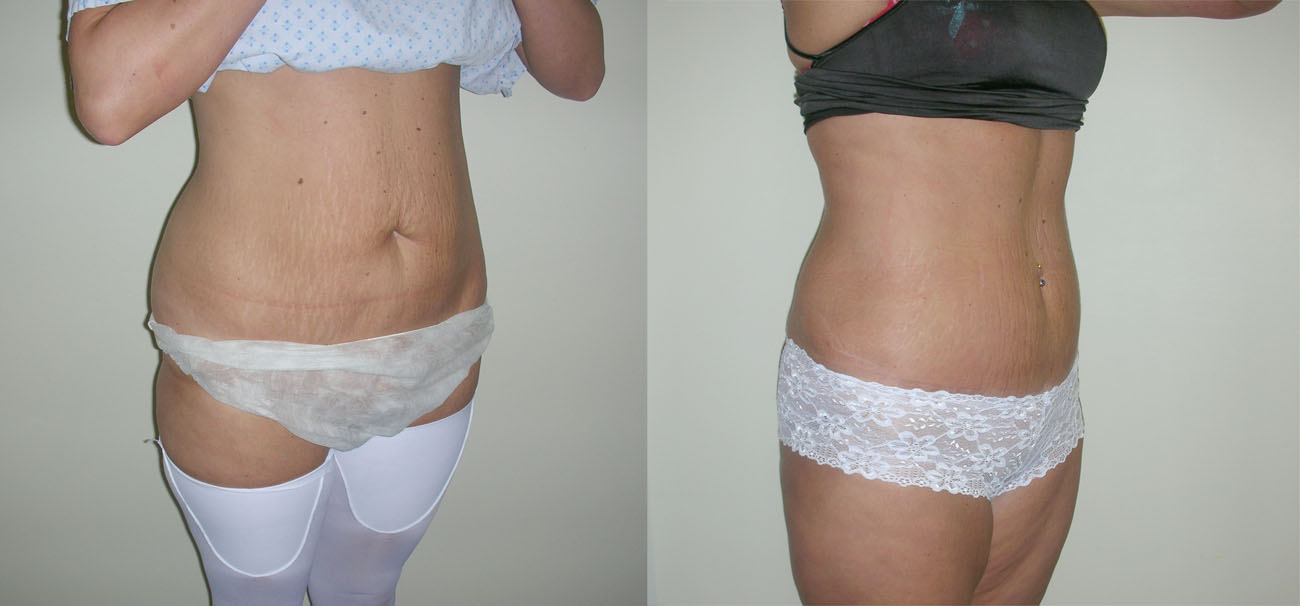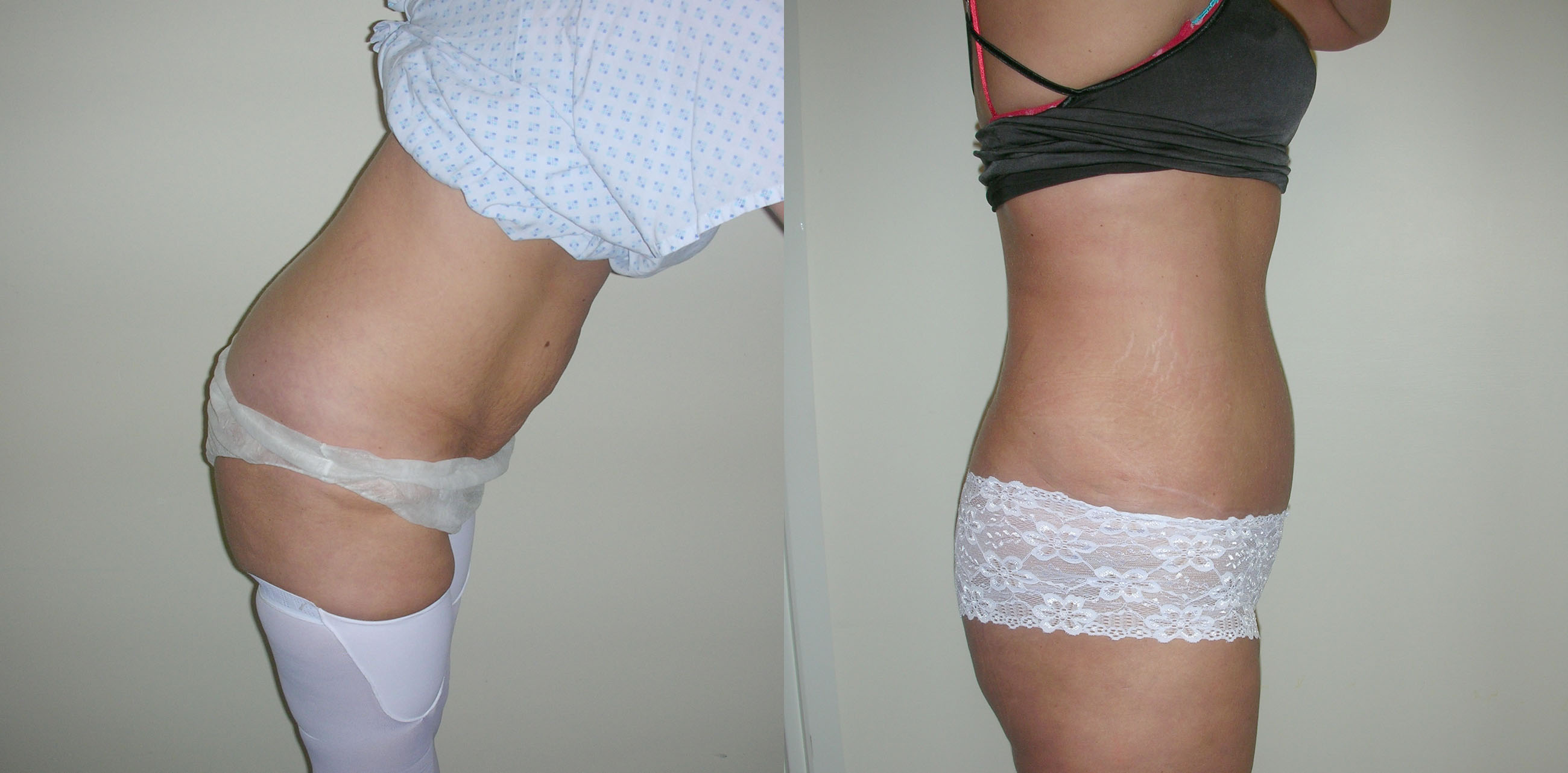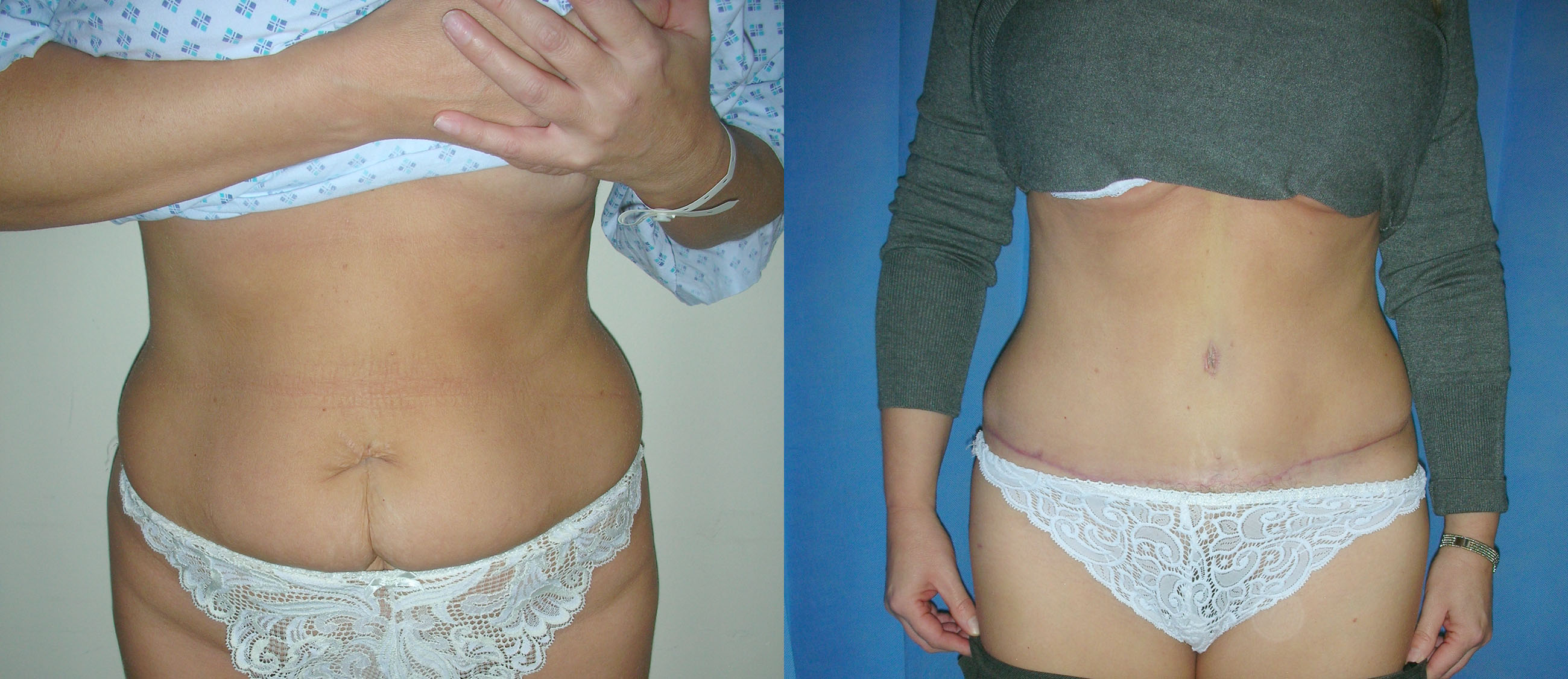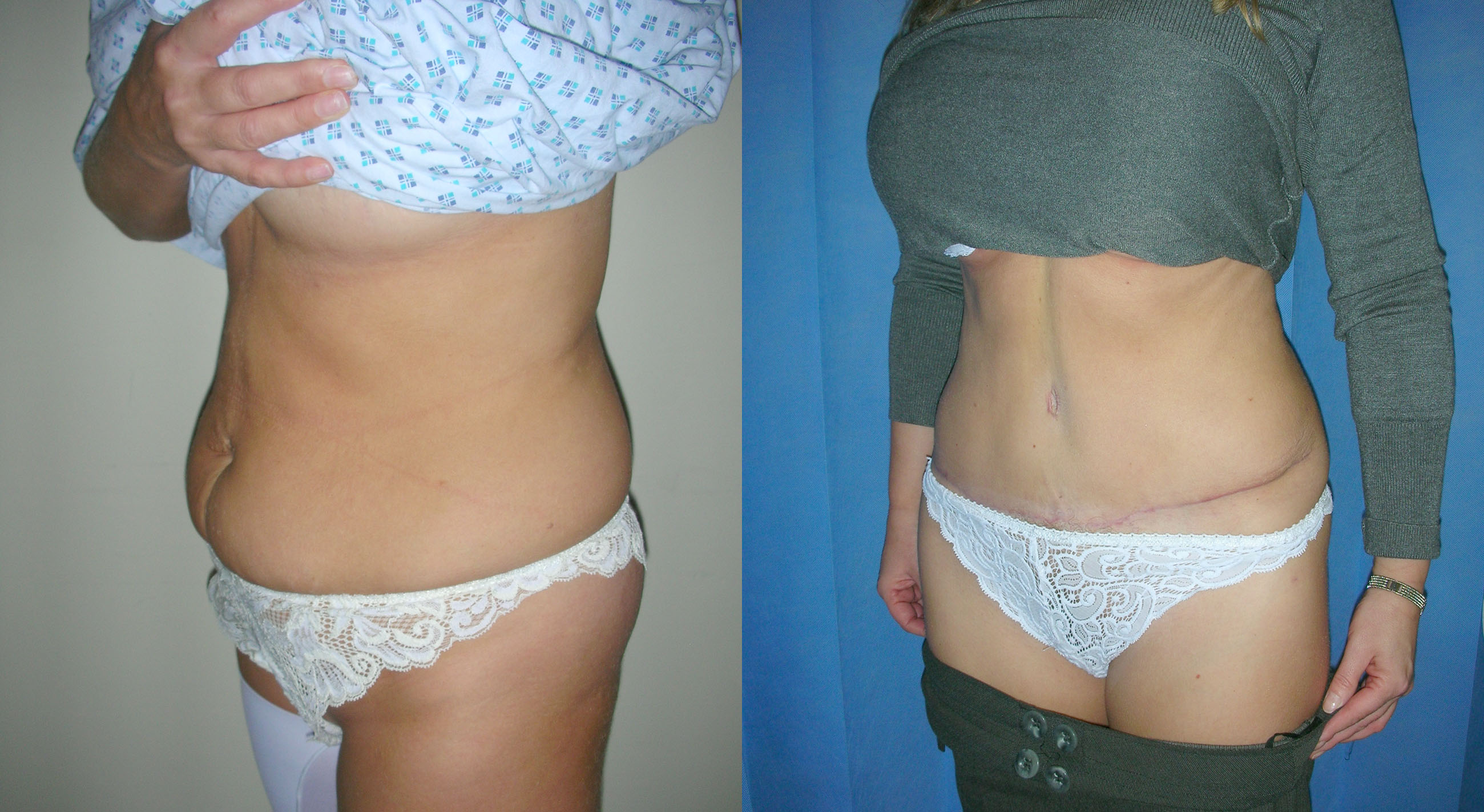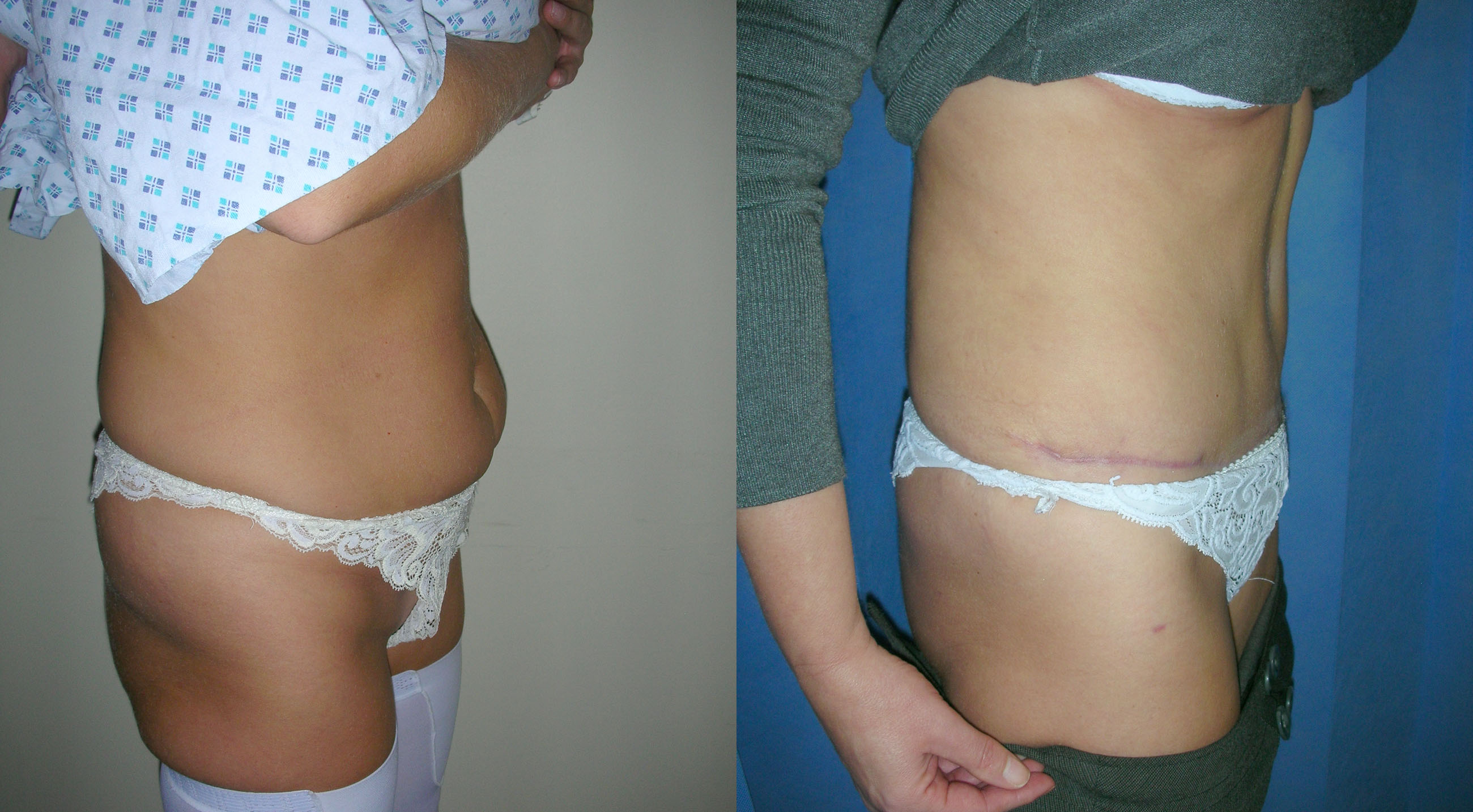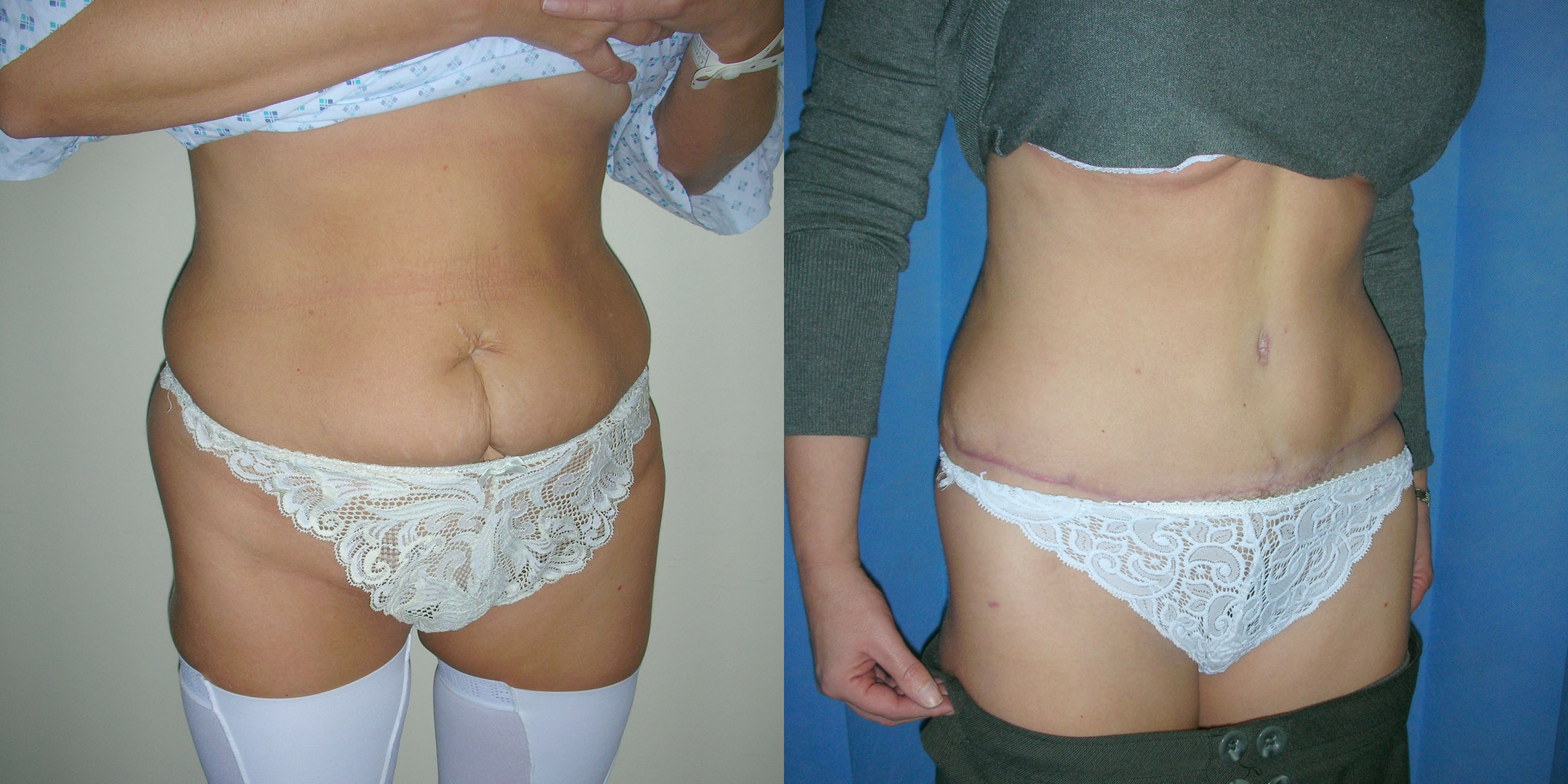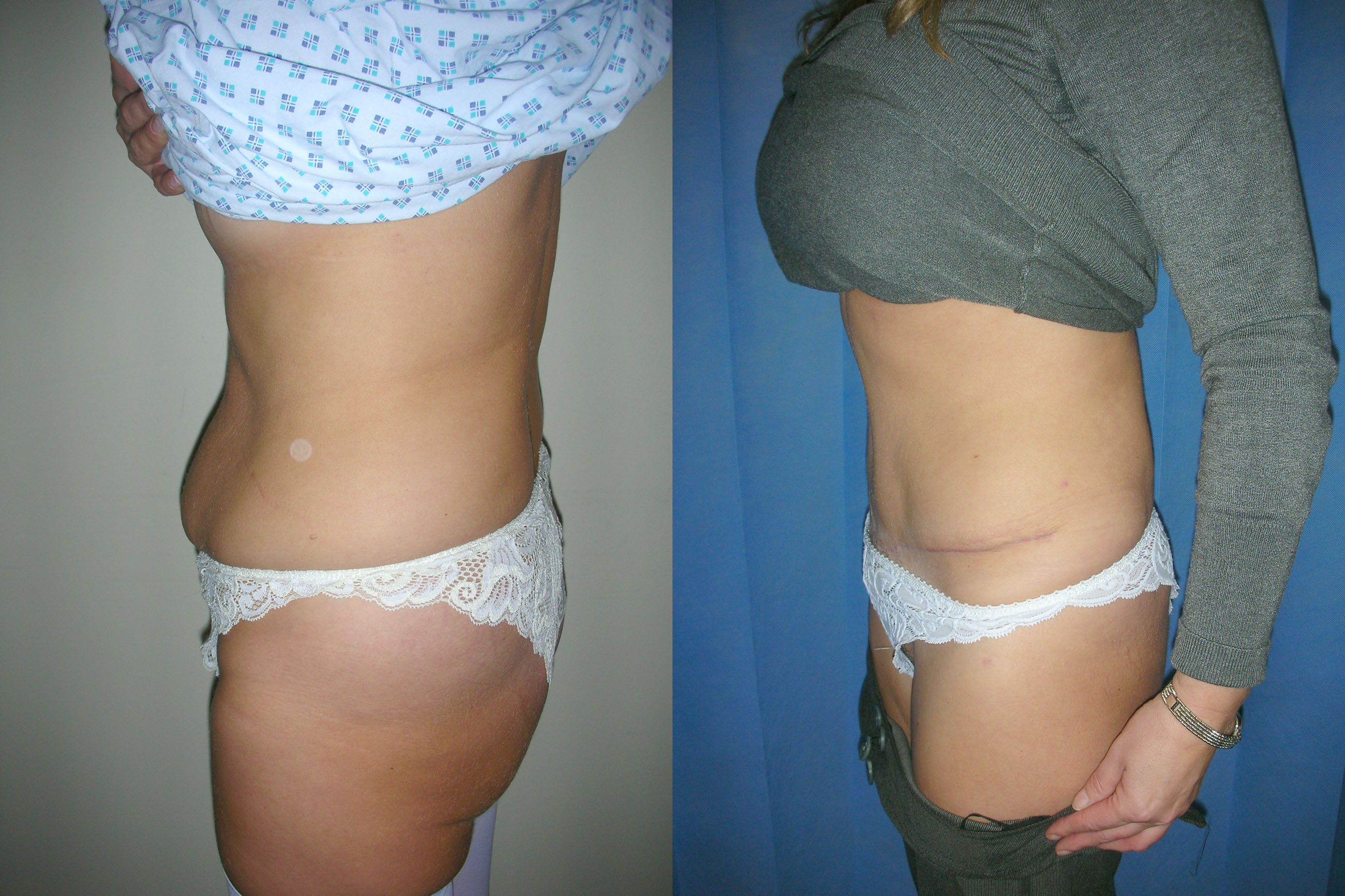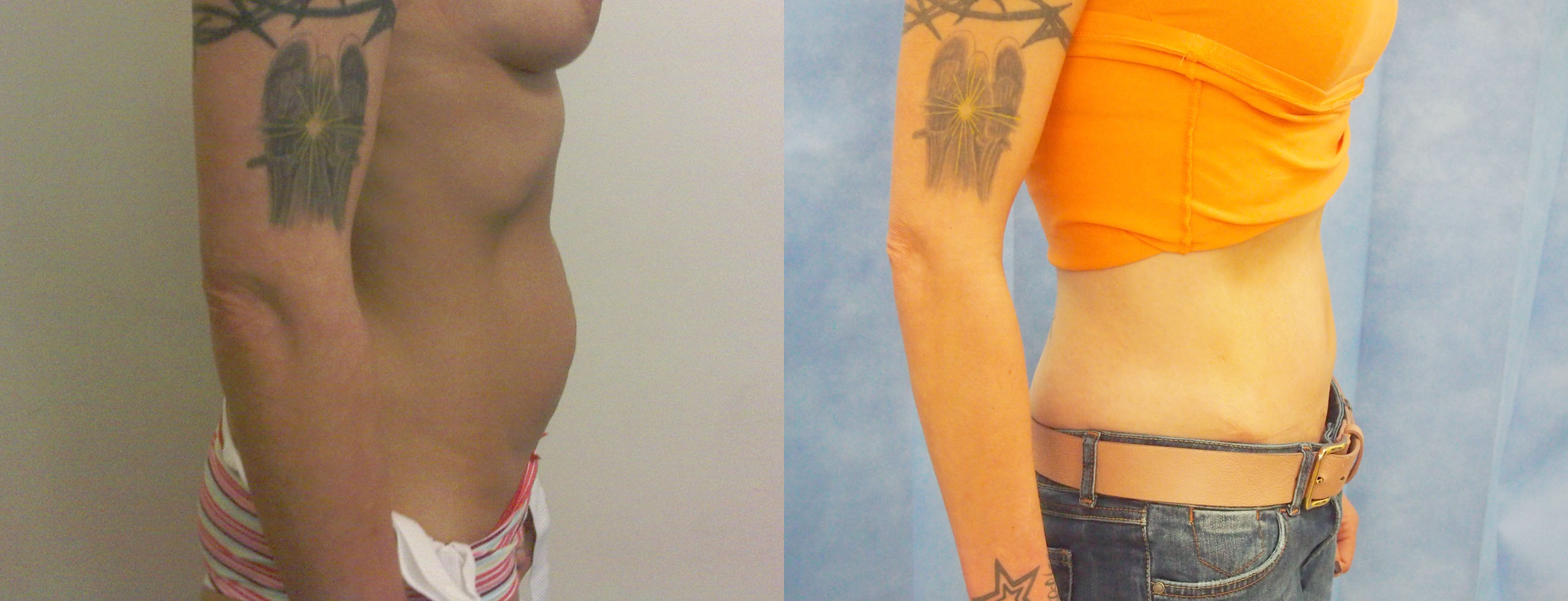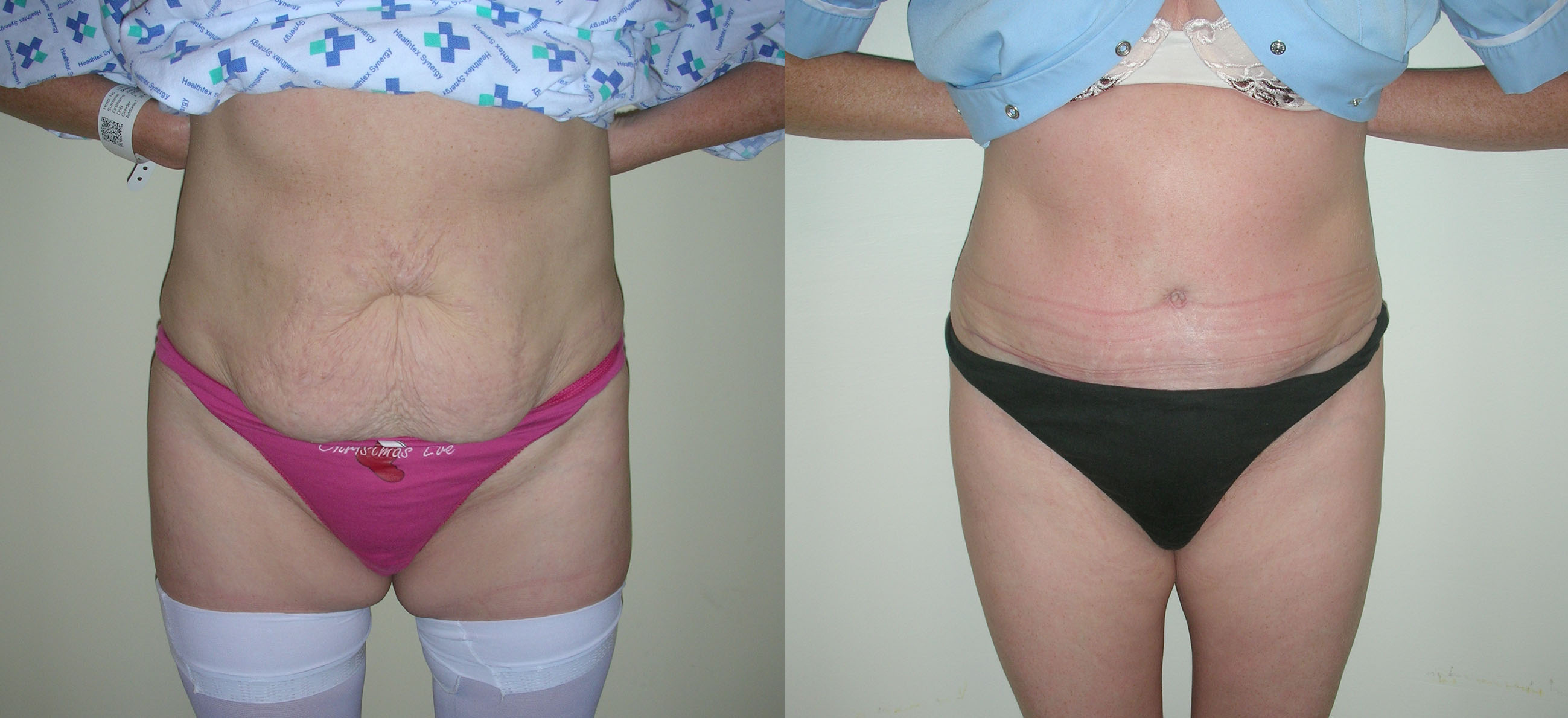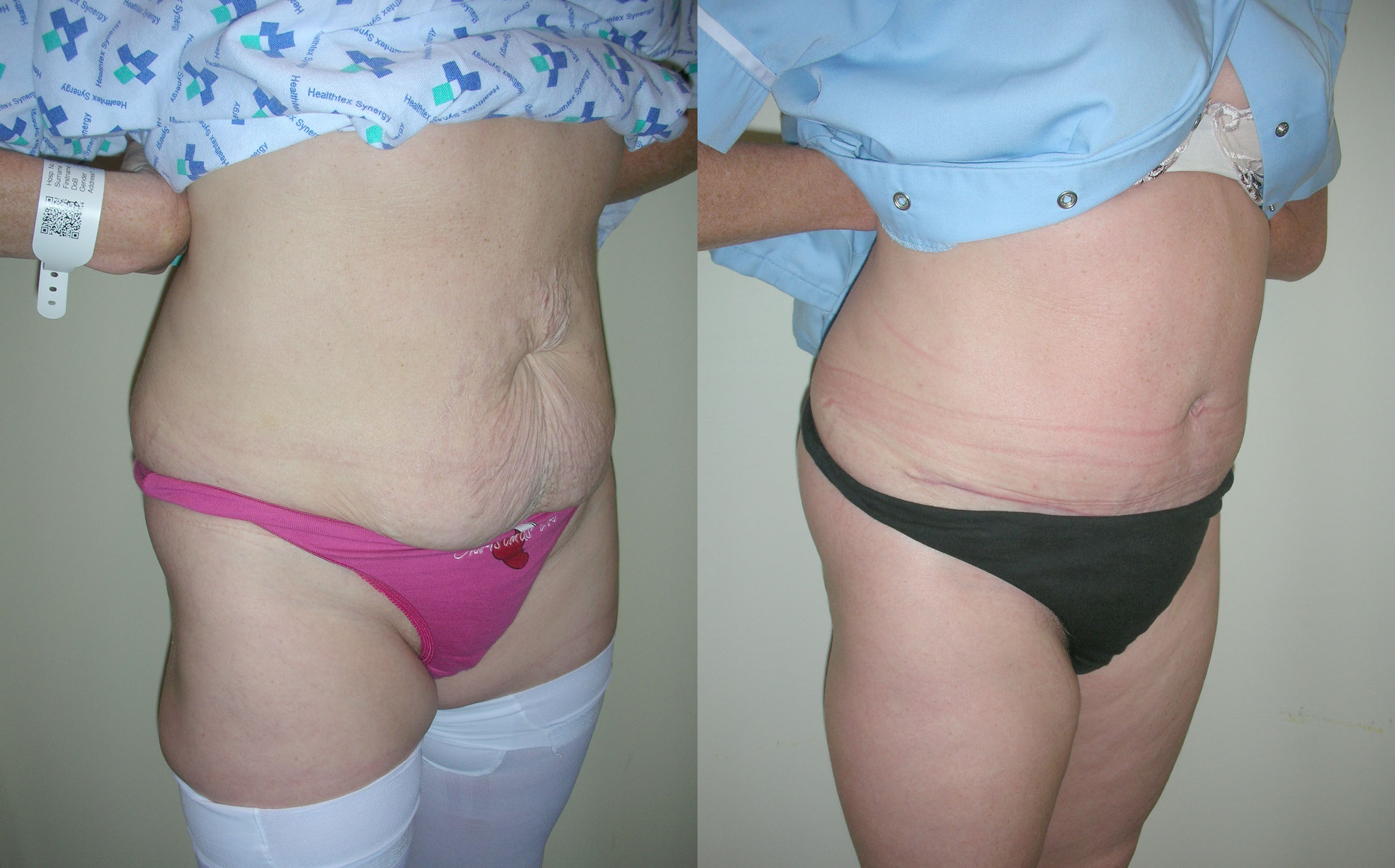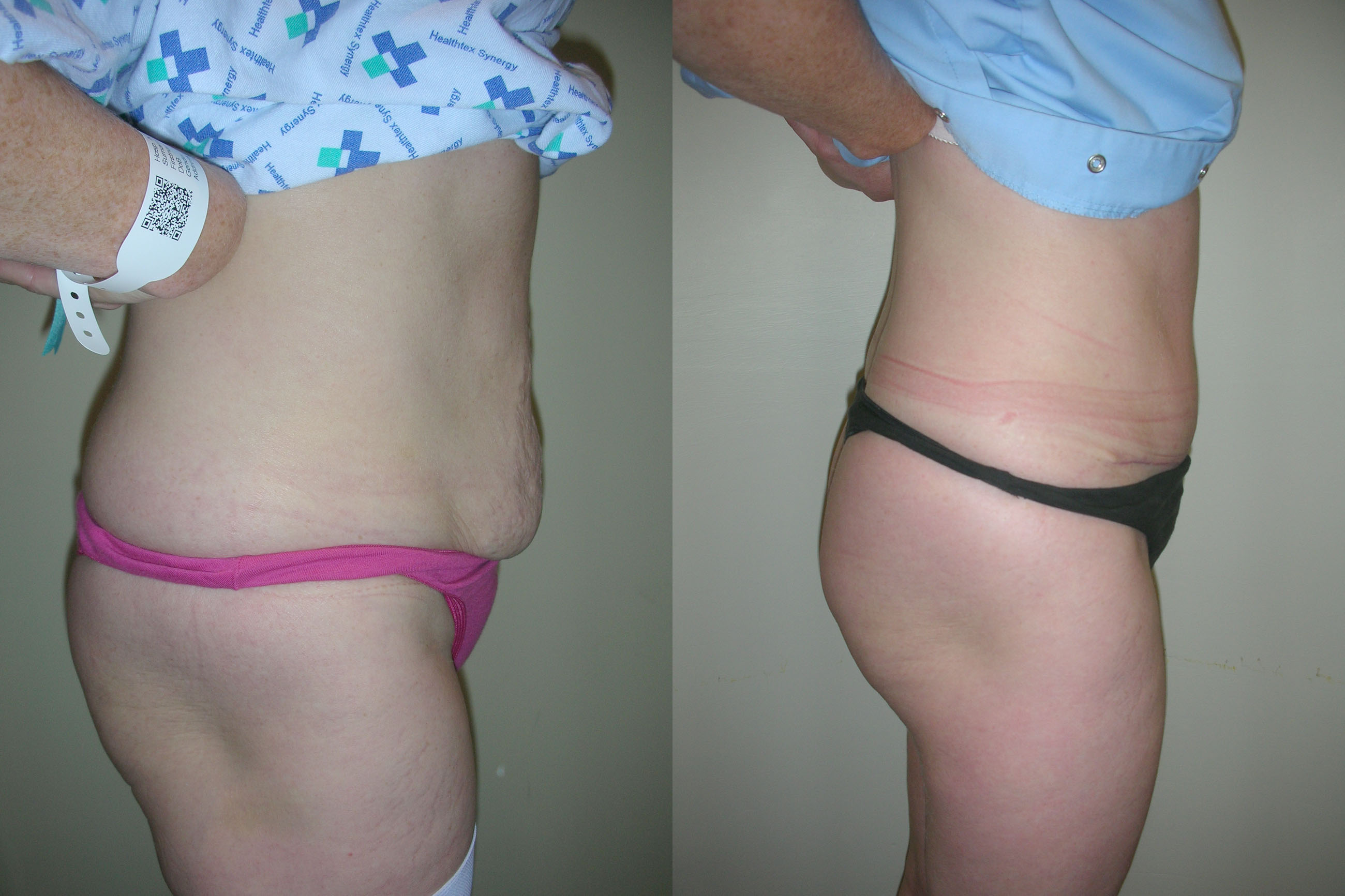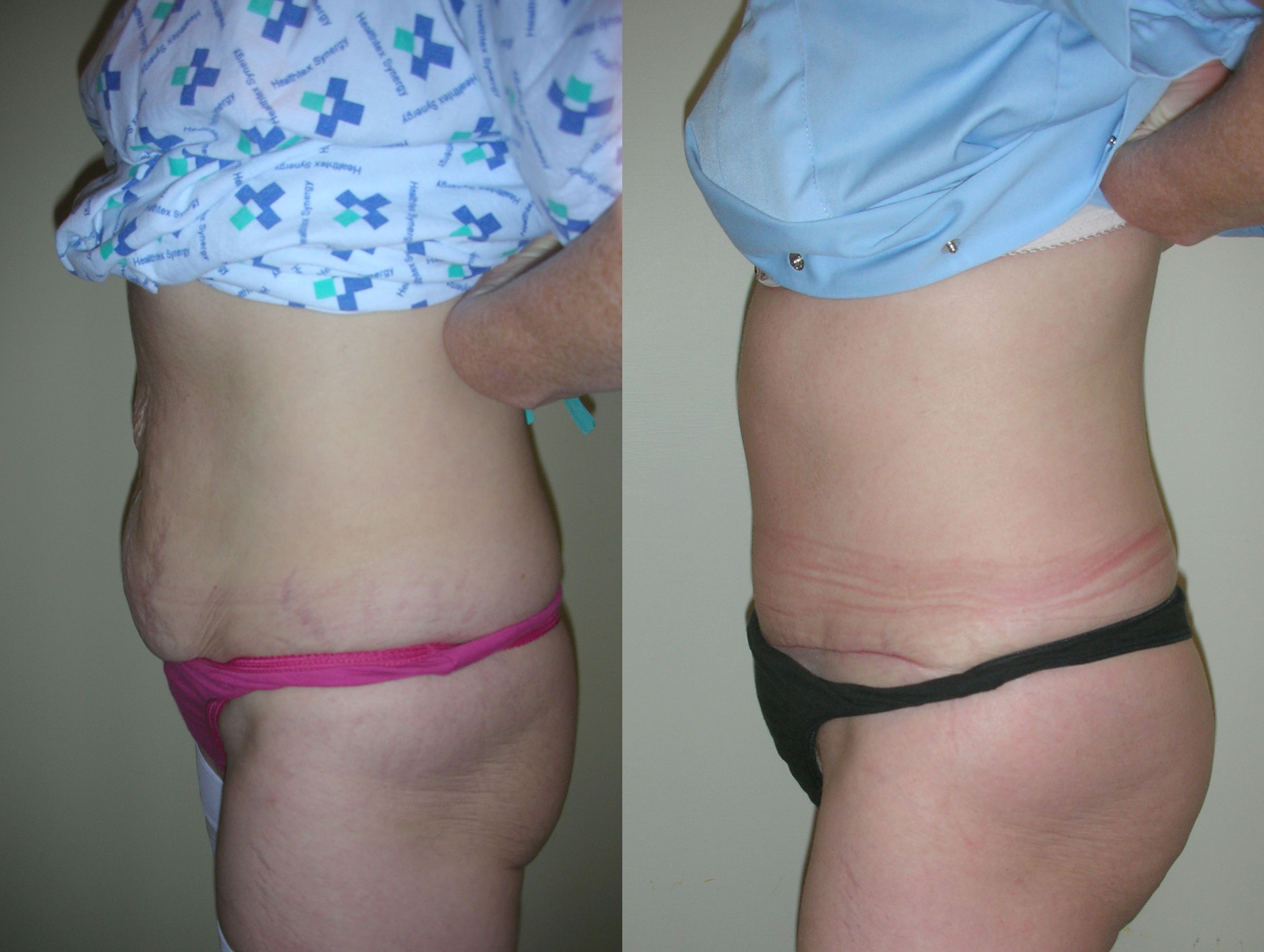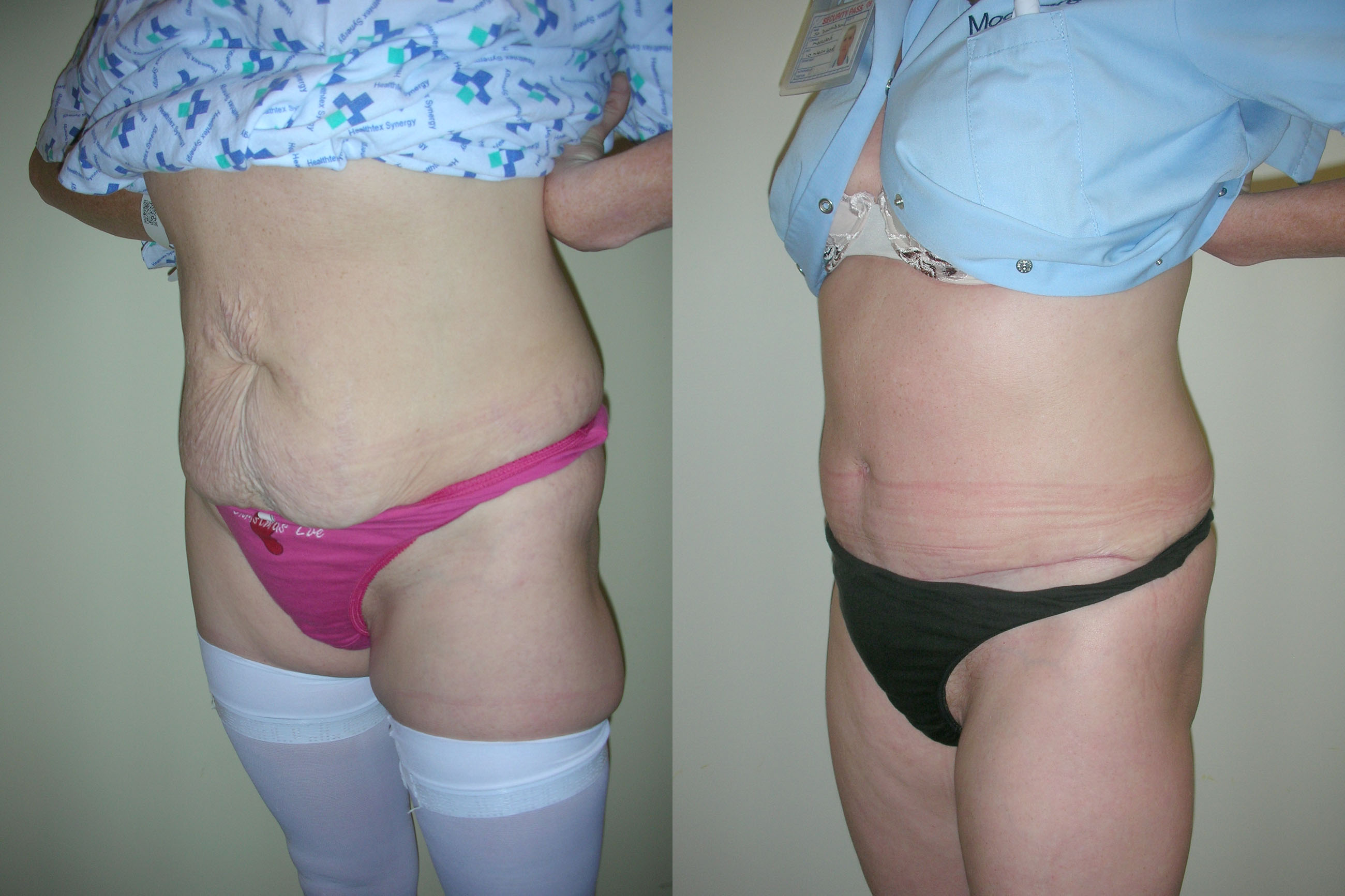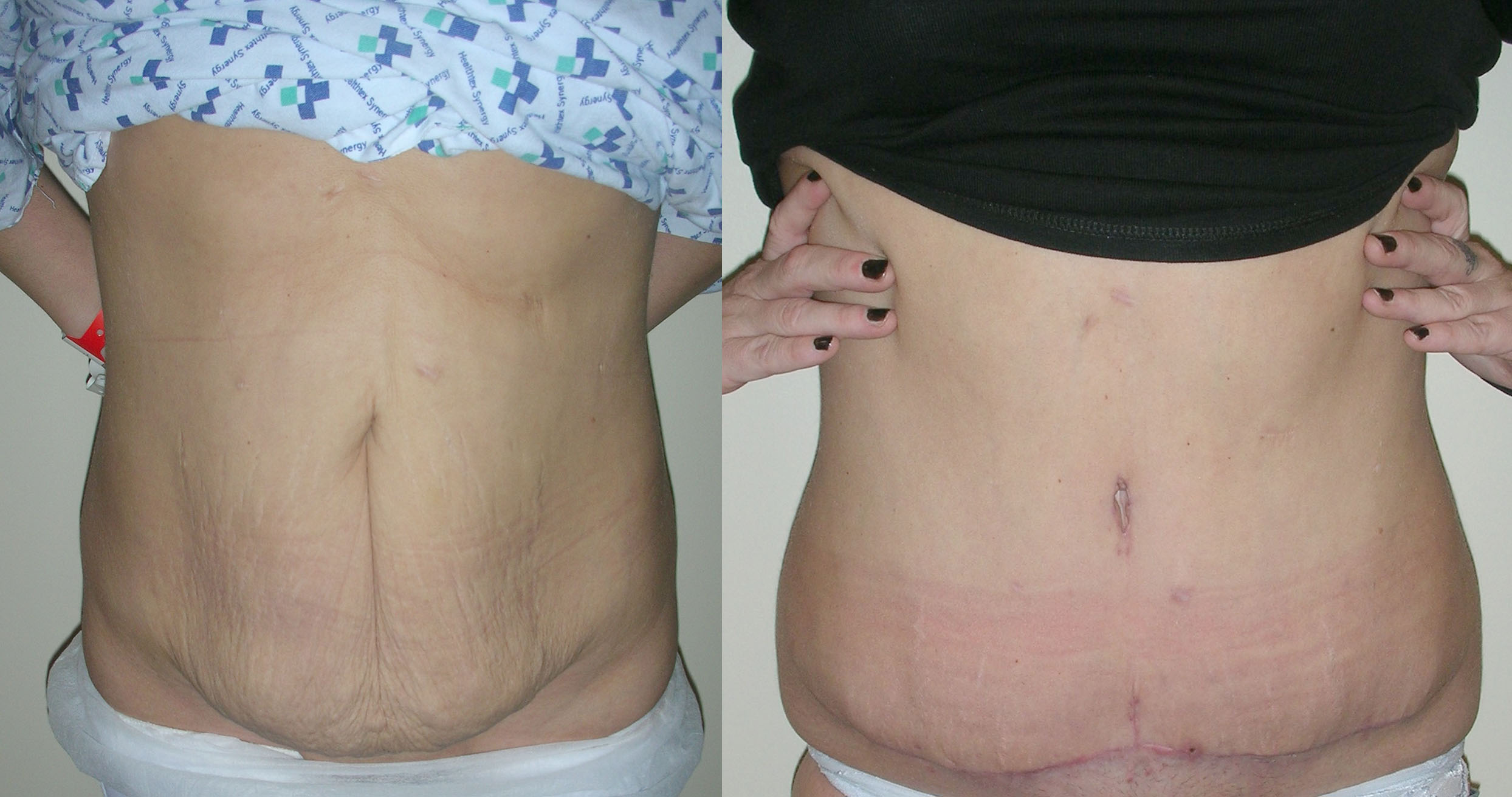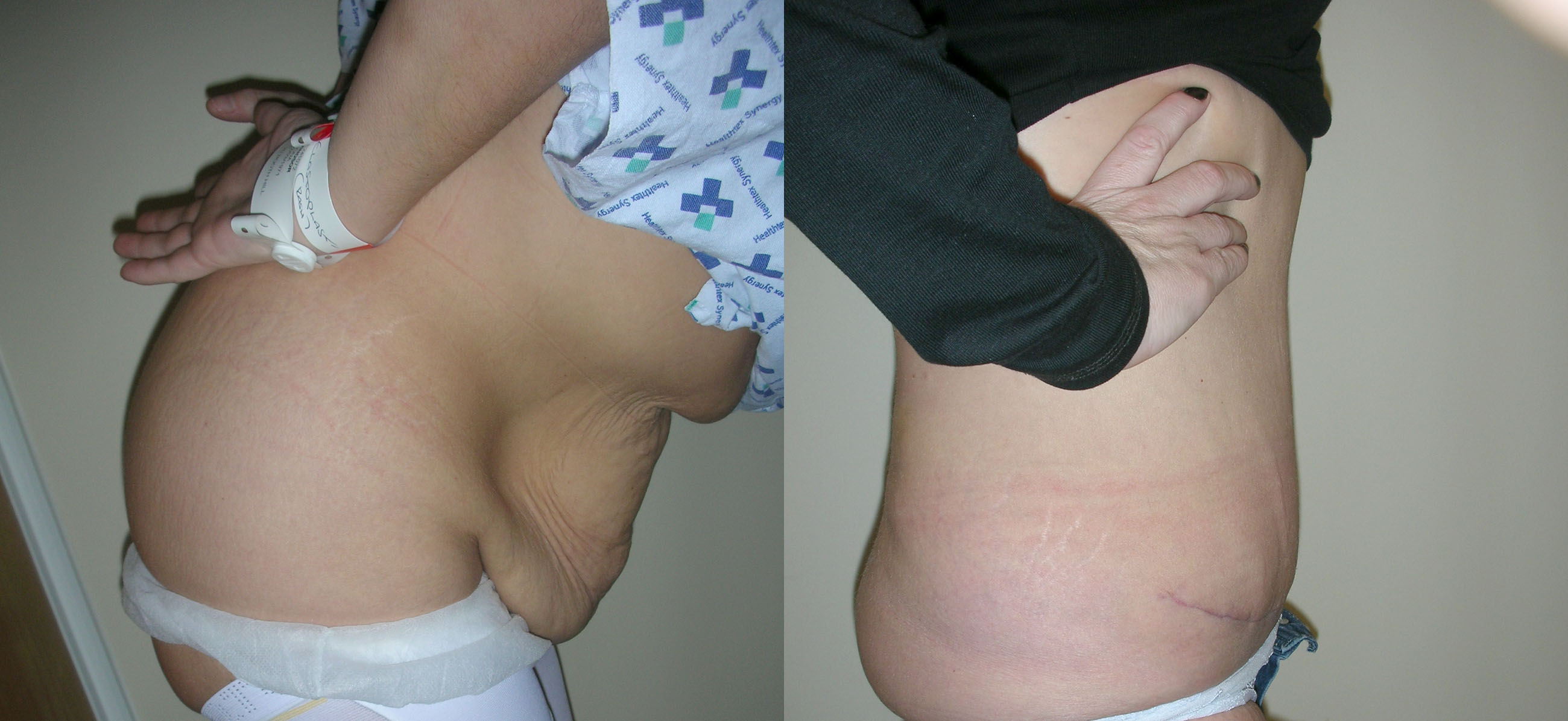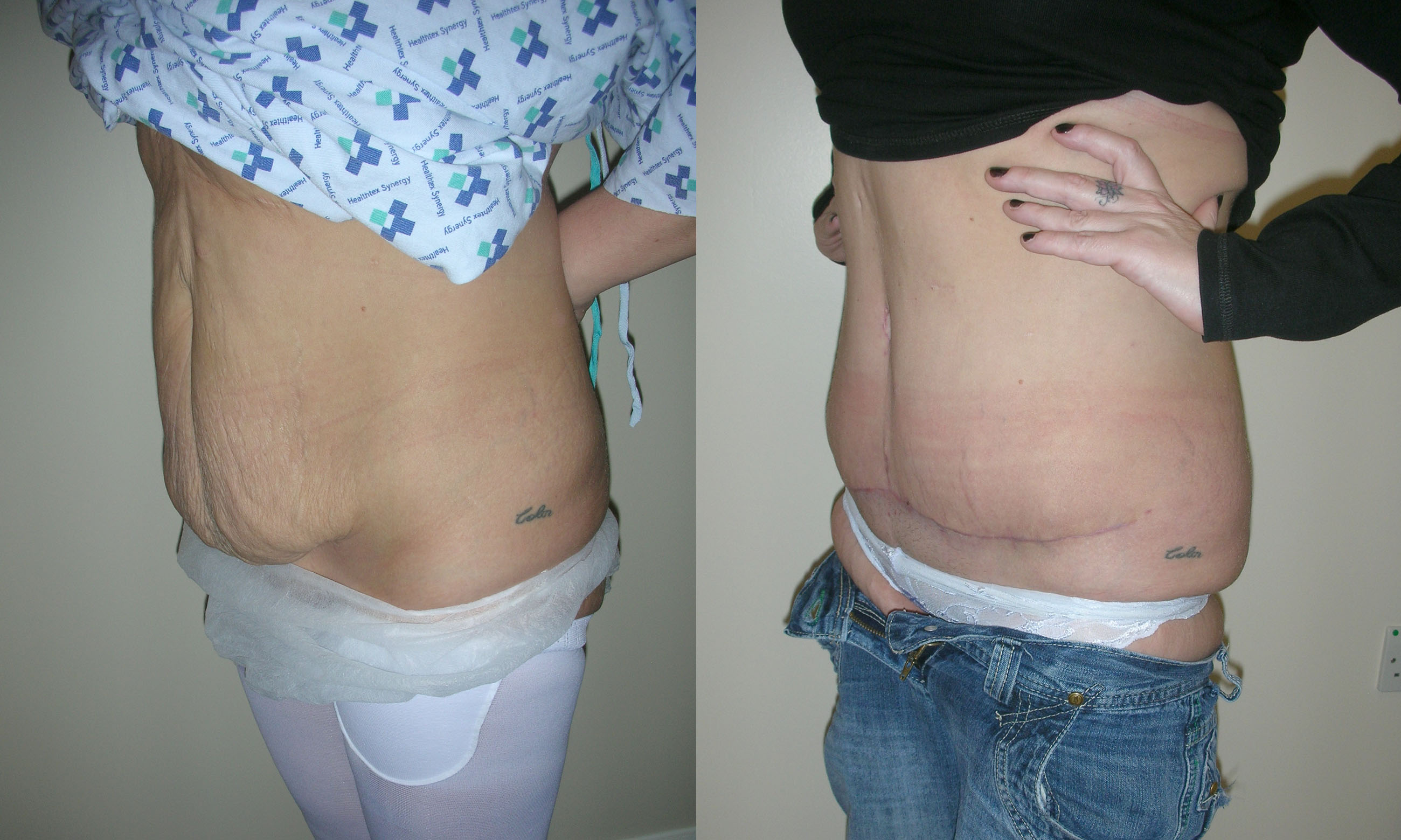Risks and limits of surgery
How much tissue is removed?
This varies enormously depending on the amount of excess there is to start with. For a small abdominoplasty that consists mainly of skin the amount can be as little as 400 g. In contrast for someone who has a large overhang of skin for example after substantial weight loss amounts as large as 4 kg can be removed.
Is it safe to have liposuction for the sides ‘love handles’ at the same time as a tummy tuck?
This depends on your medical history and the amount of tissue to be removed as well as its location. During abdominoplasty the blood supply to the tissues that are kept partly comes in from the sides of the abdomen. This means that aggressive liposuction to the sides could have an impact on this particularly if a patient has other factors that can affect their healing such as diabetes. For this reason I use Body Jet liposuction because it is a more gentle way of removing fat and in my experience has a lesser effect on the blood supply to the remaining tissues. Nevertheless there is a degree of judgment required as to how much of fat can be safely removed at same time as an abdominoplasty.
How long will the result last?
An abdominoplasty will remove excess skin and fat that exist at that time. How long it lasts depends on your natural ageing process and how elastic your skin is. It also of course depends on whether you gain further weight or have further pregnancies. For a patient with moderately good elasticity of the skin whose weight is steady and does not have any further pregnancies it is likely that the changes can be regarded as permanent. The natural ageing process will of course continue.
Can I get rid of my stretch marks with abdominoplasty?
Abdominoplasty will remove the skin and stretch marks that lie up to the level of the umbilicus (belly button). Any stretch marks that are in the skin higher than this will remain in the abdomen although they are usually of a better appearance because of the stretching that occurs.
What are the risks?
Abdominoplasty is a significant procedure that does carry a risk of complications and tailoring a plan that suits your medical history and general condition is an important aspect of your initial consultation. At this time I will go through the risks in detail with you and ways to reduce these.
Can I have a baby after a tummy tuck?
A tummy tuck will not stop you having further pregnancies but further pregnancies may reduce or undo the effects of your tummy tuck.
Can I have a tummy tuck with surgery to my breasts?
In general I prefer to focus on one area at a time in patients as in my experience this gives better results as to recovery and reduces the time that you are under anaesthetic. However when there are mild changes in two areas it may be possible to treat them at the same sitting. The pros and cons of this are something that I would discuss in detail with you at the consultation.
Aftercare
An over-hanging stomach frustrates many people because it often will not respond to die and exercise. This laxity alters the contours especially in close-fitting clothing. When a paerson is generally slim, it can unbalance their appearance.
Abdominoplasty, which is also known as a ‘tummy-tuck’ or abdominal reduction, is a surgical procedure to remove excess skin and fatty tissue from the front of the abdomen and when required (eg, after pregnancy) can be used to tighten the abdominal muscles.
The most common causes are the stretch of the skin that arises from pregnancy or substantial weight loss. Following these the excess skin contracts to a variable degree and patients are often left with an overhang or bulge of residual skin excess with some accompanying fat. This skin may have lost a great deal of elasticity and be damaged to the point of leaving typical stretch marks. This type of change tends to be at its maximum below the umbilicus (belly button).
As well as the surface changes, more deeply, the rectus abdominis muscles (‘six pack’), have gradually separated and the tissue that joins these right and left muscle straps is stretched and thinned, producing a weakness of the front wall of the abdomen.
Although exercises improve the tone of these muscles they cannot bring them back together in the midline and prevent the bulge that their separation causes.
A standard abdominoplasty does very little for bulges in the flanks (‘love handles’), although the muscle tightening component does pull the sides in to a degree. For these areas I combine abdominoplasty with Body-Jet liposuction to the flanks.
At consultation your height and weight will be charted to give a figure for your body mass index which gives us an idea about whether you would gain anything by weight loss before surgery.I will examine your abdomen with you lying down to check for any abnormalitie and the position of the abdominal musculature looking for any weak areas. I will then ask you to stand up and will assess the amount of excess skin and fat that you have.. I will assess the sides of your abdomen and any excess skin and fat deposits here and will usually demonstrate to you what can be achieved by the abdominoplasty and what will require other procedures to correct.
From this we will come up with a surgical plan tailored to you.
I admit my patients on the day of surgery and will see you pre-operatively to go through the surgical plan with you again and mark up your abdomen
At this point you will also be seen by the anaesthetist who will go over your medical history again and make a plan to ensure that your anaesthetic is smooth and discomfort minimised.
The operation itself takes approximately 2 hours for a standard abdominoplasty and may take longer depending on other procedures being carried out at the same time, for example liposuction to the sides or extensions of the abdominoplasty. . The incision for a standard abdominoplasty runs across the lower abdomen close to the groin crease. The tissues are lifted up preserving the umbilicus (belly-button) and any excess skin and fat removed. The muscles are tightened as required and the skin redraped and fashioned. Two soft silicone drains are typically used to remove any excess fluid that may accumulate in the first two days.
Following your operation you will return to the ward where I will see you, let you know how it all went and go over what you should do post-op.
Once we have established a surgical plan for you I will go through all aspects of the procedure itself, recovery time for healing, return to work, child care and exercise and we will also go through potential complications and risks including those specific to you if you have any medical conditions.
If you decide to go ahead with surgery we will arrange a date for this and you will receive confirmation via letter with detailed instructions about what you should and should not do before surgery.
Many patients are concerned that when they wake up they will be in severe pain or feel very sick. My anaesthetist will do their best to ensure that you are not in discomfort when you wake up and usually give you something to prevent nausea before you wake up. You should, however, let the anaesthetist know if you are prone to sickness after surgery so that they can take more steps to prevent this.
Usually patients report moderate discomfort, which is usually controlled by the painkillers that are supplied during your stay and which are given to you to take home. The dressings applied at surgery are kept in place. You will be encouraged to take gentle short walks a few hours after your surgery with assistance.
Because of the tightening that has taken place in your abdomen you will initially be asked to walk in a bent position at the hips and will have pillows under your thighs to do this when in bed. As time goes on and you start to heal you will gradually be able to stretch into the straight position (usually after 2-3 days).
I will see you each day and on the day of your discharge I will remove your drains. and make all the preparations for your discharge, going over what you can do at home in detail.
Each patient has a recovery plan tailored to their situation but as a general guide you should keep your dressings dry and undisturbed until your follow-up at one week.
During that first week, you should also keep mobile by walking but avoid other exercises and lifting anything but light objects – this is particularly important in relation to childcare.
At your one-week follow-up appointment I will remove all your dressings. At this point you can start to shower and apply a layer of sudocrem to your wound daily as a barrier.
You should avoid driving until 10-14 days and even then restricting it to essential short trips.
After two weeks you may be able to carry out light work, but should avoid manual work for a further two weeks, building it up slowly from there.
I see you at your second review at two weeks to check how you are progressing. Usually we can switch to moisturiser and massage of your scars at this stage. You should continue this for 12 months to optimise the appearance of your scar.
I like to follow your progress and will arrage to see you again at six weeks and 4 months after your surgery.

